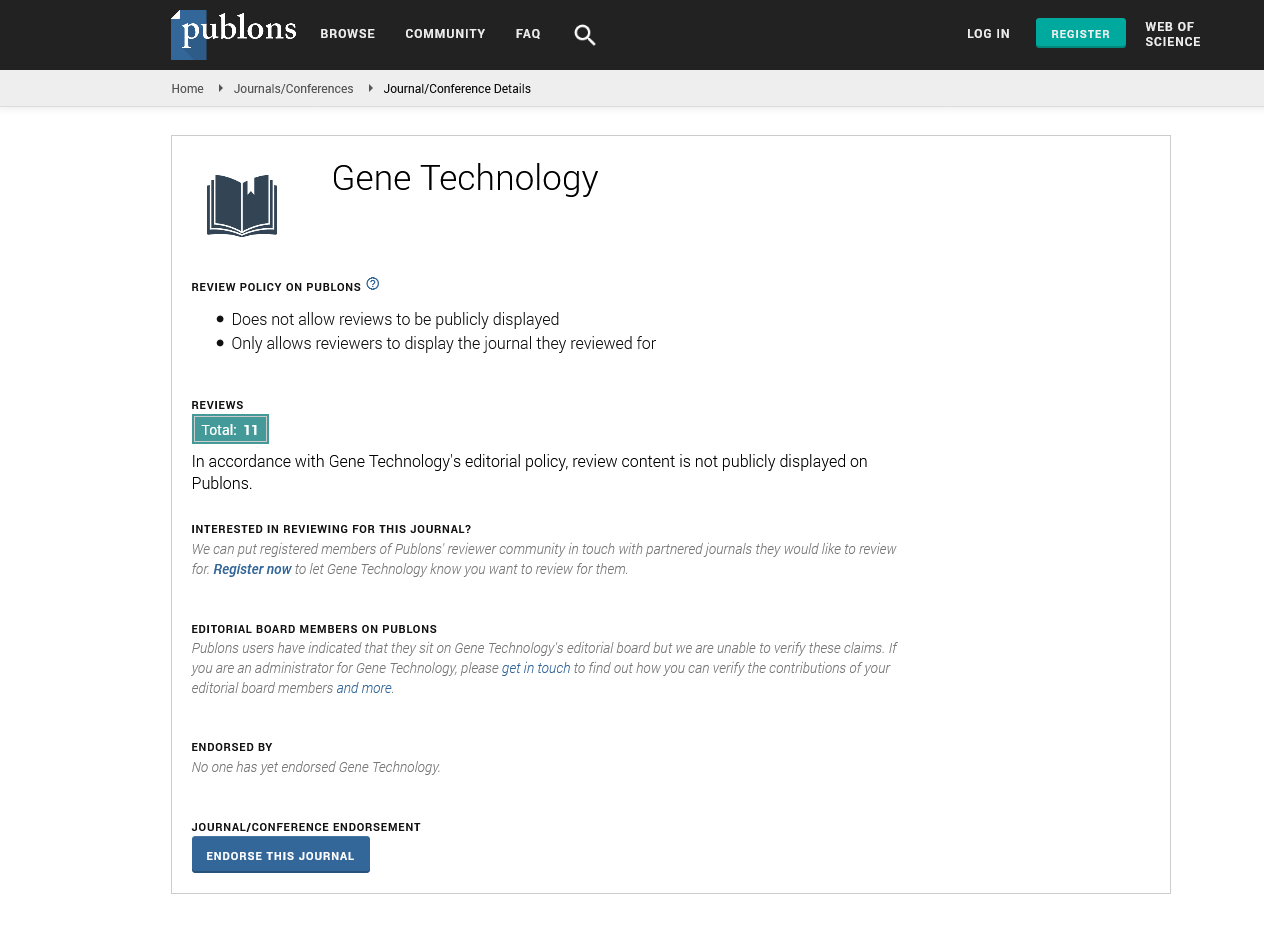Indexed In
- Academic Keys
- ResearchBible
- CiteFactor
- Access to Global Online Research in Agriculture (AGORA)
- RefSeek
- Hamdard University
- EBSCO A-Z
- OCLC- WorldCat
- Publons
- Euro Pub
- Google Scholar
Useful Links
Share This Page
Journal Flyer

Open Access Journals
- Agri and Aquaculture
- Biochemistry
- Bioinformatics & Systems Biology
- Business & Management
- Chemistry
- Clinical Sciences
- Engineering
- Food & Nutrition
- General Science
- Genetics & Molecular Biology
- Immunology & Microbiology
- Medical Sciences
- Neuroscience & Psychology
- Nursing & Health Care
- Pharmaceutical Sciences
Commentary Article - (2024) Volume 13, Issue 2
Understanding Trichotillomania through the Lens of Genetics
Robin Marc*Received: 03-Jun-2024, Manuscript No. RDT-24-26171; Editor assigned: 06-Jun-2024, Pre QC No. RDT-24-26171 (PQ); Reviewed: 20-Jun-2024, QC No. RDT-24-26171; Revised: 27-Jun-2024, Manuscript No. RDT-24-26171 (R); Published: 04-Jul-2024, DOI: 10.35248/2329-6682.24.13.277
Description
Hair-pulling disorder, or trichotillomania, is a psychological problem marked by an obsessive tendency to pull out one's hair, causing considerable hair loss. This disease can cause severe mental and social anguish and affects about 1% to 2% of the population. While various factors contribute to the development of trichotillomania, has increasingly focused on the genetic underpinnings of the condition. Understanding the genetic components of trichotillomania could more effective treatments and interventions. Trichotillomania typically manifests during adolescence, although it can occur at any age. The disorder is classified under the umbrella of obsessive-compulsive and related disorders in the Diagnostic and Statistical Manual of Mental Disorders (DSM-5. This behavior often serves as a coping mechanism for stress, anxiety. The exact cause of trichotillomania remains elusive, but growing evidence suggests a significant genetic component. Family studies have indicated that trichotillomania tends to run in families, with first-degree relatives of affected individuals being more likely to develop the disorder. This familial aggregation points to the potential role of genetic factors. However, environmental factors also play a role, as concordance rates are not 100%.
Genetic linkage and association studies aim to identify specific genetic variants associated with trichotillomania. Linkage studies examine the co-segregation of genetic markers within families, while association studies compare the frequency of genetic variants between affected individuals and healthy controls. This region contains several genes, including SLITRK1, which has been implicated in other neuropsychiatric disorders such as Tourette syndrome. Variations in the SLITRK1 gene may affect synaptic functioning, contributing to the development of trichotillomania. Candidate gene studies focus on genes suspected to be involved in trichotillomania based on their biological functions. For example, the serotonin and dopamine systems have been implicated in trichotillomania due to their roles in regulating mood and impulse control. Genes involved in these pathways, such as SLC6A4 (Serotonin Transporter Gene) and DRD2 (Dopamine Receptor Gene), have been examined for potential associations with the disorder. While some studies have found associations, the results have been inconsistent highlighting the complexity of the genetic architecture of trichotillomania.
Epigenetic mechanisms, which involve changes in gene expression without altering the DNA sequence, may also play a role in trichotillomania. Environmental factors, such as stress and trauma, can influence epigenetic modifications, potentially affecting the development and severity of trichotillomania. Understanding the genetic basis of trichotillomania has significant implications for treatment. Currently, treatment options for trichotillomania include behavioral therapies, such as Cognitive-Behavioral Therapy (CBT), and pharmacological interventions, such as Selective Serotonin Reuptake Inhibitors (SSRIs). However, these treatments are not universally effective, and many individuals do not achieve complete remission. Advances in genetic could lead to the development of personalized medicine approaches for trichotillomania. By identifying specific genetic variants associated with the disorder, clinicians could tailor treatments to individuals based on their genetic profiles. Genetic could also identify new therapeutic targets for trichotillomania. For instance, if specific genes or pathways are found to play a critical role in the disorder, novel medications could be developed to modulate these targets. This approach has already shown in other psychiatric conditions and could revolutionize the treatment landscape for trichotillomania.
Trichotillomania is a complex disorder with a multifaceted etiology involving genetic, environmental and psychological factors. While significant progress has been made in understanding the genetic basis of trichotillomania, much remains to be discovered. Continued into the genetic and epigenetic underpinnings of the disorder are more effective personalized treatments offering hope to individuals affected by trichotillomania. As our understanding of the genetic factors influencing trichotillomania deepens so too will our ability to provide target and effective interventions, ultimately improving the quality of life for those struggling with this challenging condition.
Citation: Marc R (2024) Understanding Trichotillomania through the Lens of Genetics. Gene Technol. 13:277.
Copyright: © 2024 Marc R. This is an open-access article distributed under the terms of the Creative Commons Attribution License, which permits unrestricted use, distribution, and reproduction in any medium, provided the original author and source are credited.

